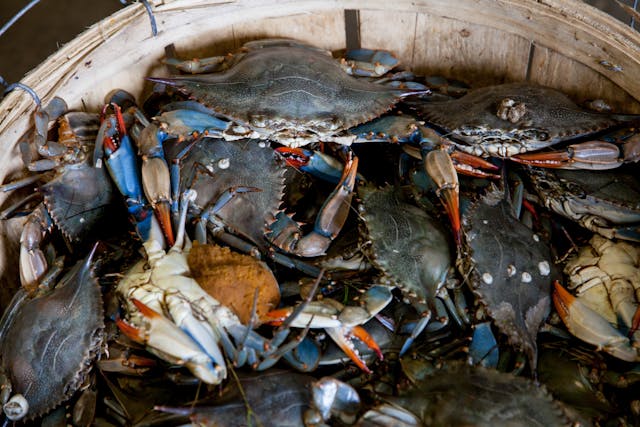If you're a true-blue Marylander, you know that there's nothing better than steaming up a big bushel of crabs and devouring them with friends and family at a newspaper-covered table. But how do those crabs actually get there?
Well, crabbing season in Maryland has kicked off, and that means now is a great time to explore the ways we get those delicious crustaceans from the water to our table.
Keep in mind that if you're interested in getting started, there are some rules and regulation to be aware of. Certain types of traps are not allowed -- that includes those that automatically spring shut when touched -- and only male crabs may be harvested from certain areas.
You've probably seen the way that males and females are distinguished from one another, but just in case you're unsure, males have a 'Washington monument' on their bellies while females have a 'Capitol building'. This refers to the size and shape of the 'apron' or bottom of the shell.
The way you catch your crabs will also matter a lot under the law! If you're a recreational crabber, you may need a fishing license, depending on the way you choose to crab. Kids under 16 do not need a license, and you won't need one if you're using a hand line or a dip net.
Your location matters as well. Different regulation apply to crabbing in the Atlantic and its tributaries versus the Chesapeake Bay. Be sure to study up! Your location will affect how many crabs you can take home per day, the time of day in which you can crab, and the size and gender of the crabs you can take.
Keep bait in mind as well. There are a lot of pieces of bait that locals swear by, but generally any cheap piece of meat will work. Crabs are bottom feeders that aren't picky about choice cuts, so don't buy steak when chicken necks or gizzards will work just as well.
Whew! That's a lot of information to take in before you even get started. Trust us, though, it's worth it. Once you're ready to get going, keep storage in mind. You'll want to bring a bucket that your catch can stay fresh in, one that's deep enough to keep them from getting out (preferably with a lid). You'll also want to practice holding your crabs from the back to ensure they won't snip you once you extract them.
Here are some helpful resources for those who want to get all the deets on legally grabbing crabs!











